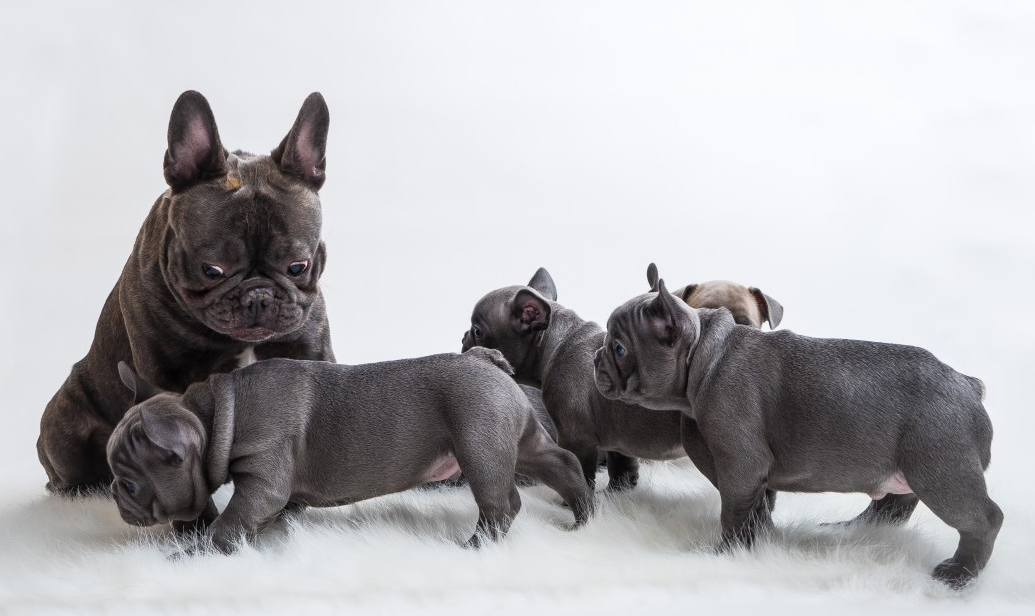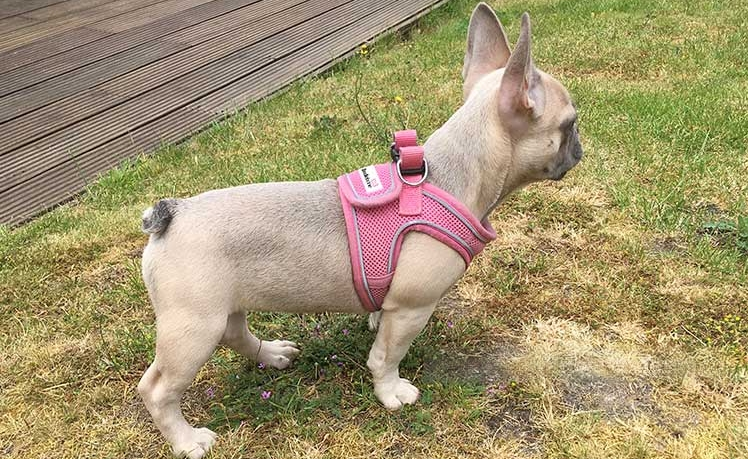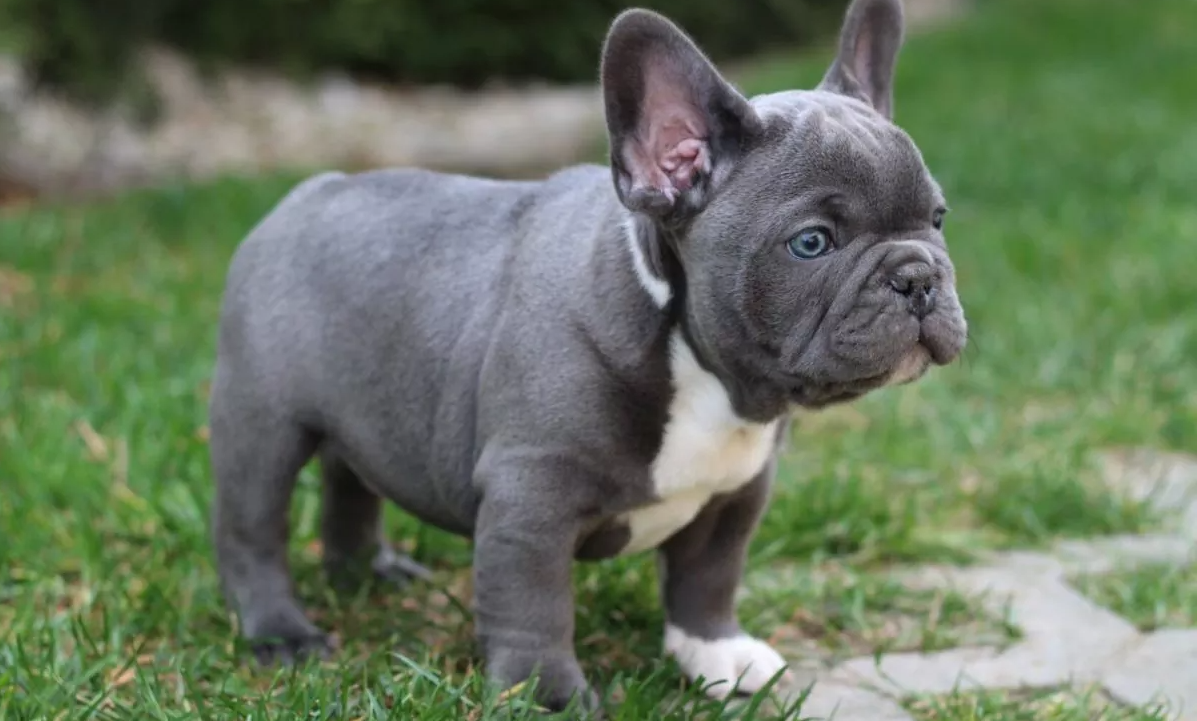French Bulldogs are a popular breed of dog known for their friendly temperament, loyalty, and unique appearance. As with all dog breeds, French Bulldogs have a reproductive cycle that requires careful attention and management, particularly regarding breeding. This blog will closely examine the French Bulldog heat cycle and when to breed these dogs.
What is the French Bulldog Heat Cycle
The French Bulldog heat cycle, or estrus, is a natural physiological process in female French Bulldogs. It is a period when the female is receptive to mating and can become pregnant. The heat cycle typically starts when the French Bulldog reaches the age of six months to one year and recurs every six to eight months.
During the heat cycle, the female will experience physical and behavioral changes, such as swelling of the vulva, a bloody discharge, increased urination, and restlessness. Owners of female French Bulldogs should be aware of the heat cycle and take precautions to prevent unwanted pregnancies, such as keeping the dog away from male dogs during this period.
Signs of Heat in French Bulldogs
Every owner must know the signs of heat in French Bulldogs to ensure their safety and well-being. Here are some of the most common symptoms to watch out for:
- Panting: Panting is a common way dogs regulate their body temperature, but excessive panting can be a sign of heat stress in French Bulldogs. If your Frenchie is panting heavily and continuously, it’s a sign that they may be overheated.
- Excessive Drooling: French Bulldogs experiencing heat stress may also drool excessively. If your Frenchie is drooling more than usual, it’s a sign that they need to cool down.
- Red or Pale Gums: The color of your Frenchie’s gums can indicate their overall health. If their gums are red or pale, it’s a sign that they may be overheated and need immediate attention.
- Lethargy: Heat stress can cause French Bulldogs to become sluggish and unresponsive. If your Frenchie is lying down and not showing any interest in its surroundings, it’s a sign that it may be suffering from heat exhaustion.
- Vomiting or Diarrhea: French Bulldogs suffering from heat stress may also experience vomiting or diarrhea. These symptoms indicate dehydration, which can become life-threatening if not treated promptly.
- Rapid Heart Rate: Heat stress can cause a French Bulldog’s heart rate to increase rapidly. If your Frenchie’s heart rate is significantly higher than usual, it’s a sign that they may be overheated.
- Collapse: In severe cases, French Bulldogs may collapse due to heatstroke. If your Frenchie collapses and cannot recover, seeking immediate veterinary attention is essential.
Preparing for Breeding
Preparing for the breeding of bulldogs requires careful consideration, as this can be a complex and lengthy process. To ensure success and healthy puppies, selecting the right sire and dam for the breeding pair is important: look for individuals with desirable characteristics, good physical health, and clear genetic histories.
A female will be ready for breeding once she is 18 months old and has undergone her first heat cycle; male bulldogs should only be bred once they are two years old. It is also vital that both parents receive regular veterinary checkups before, during, and after pregnancy to monitor their health. With the right conditions in place, a successful outcome can result in happy families and loyal friends.
Timing the Breeding Process
Breeding bulldogs correctly is a complex process, and getting the timing right is essential to ensure that the breeding process is successful. To properly time their breeding, owners should be aware of their Bulldog’sBulldog’s cycle to ensure they are at the peak of their health and fertility before introducing them for mating. It’s important to avoid breeding when either parent exhibits fatigue or illness, as this could cause potential issues for the mother and puppies.
Additionally, planning for 8 weeks post-breeding can help ensure that all appropriate preparations are made before the pups arrive. When prospective bulldog owners carefully consider timing, any future litter can thrive on a solid foundation.
Breeding During the Heat Cycle
Breeding bulldogs in the summertime poses additional challenges and risks during their heat cycle. During this time, they are at greater risk of overheating or being stressed, so it is essential to take extra measures to ensure your bulldogs remain relaxed and comfortable. It might include ensuring air conditioning runs throughout the facility, providing extra ice blankets, and having ample water available for the dogs. Reducing exercise times and intensity once the temperature starts climbing is also recommended to ensure the dog is not exhausted.
Furthermore, before entering a breeding program, you should thoroughly educate yourself on any possible health risks expressed by your breed in hot weather. By taking these preventative steps before beginning a bulldog breeding cycle during warm weather, you can ensure that you and your animals have a safe and successful experience.
Health Considerations for Breeding
When breeding bulldogs, paying extra attention to the possible health issues associated with the breed is important. Bulldogs may experience heart conditions, respiratory difficulties, skin conditions, joint troubles, and other potential diseases. Responsible breeders mitigate these risks through genetic health screening and select the suitor carefully to avoid any genetically-inherited disorders from passing on.
It would help if you also took special care to ensure that puppies whose parents have ailments or known genetic defects should never be bred. Dogs with good health are likelier to produce healthy offspring, so prospective owners should always ask for proof of testing and pedigree information before purchasing.
Nutritional Requirements for Breeding
Breeding bulldogs can be challenging, requiring special attention to the dietary and nutritional needs of the animals. These animals generally need a well-balanced diet with adequate proteins, fats, carbohydrates, vitamins, minerals, and other essential elements to be healthy and sturdy. As puppies and maturing adults, they require specific diets catered to their needs and activity levels. A balanced diet should include high-quality foods suitable for their size and breed compared to typical adult dogs. Pork liver or hearts can carry potential parasites that may cause serious health issues in Bulldogs; thus, avoiding these pork products in their diet is advisable.
Additionally, when Bulls are pregnant or lactating, their caloric intake must be higher than what is provided by the regular diet; this requires separate food rations featuring simple carbohydrates that provide quick energy for the mother and pups. With careful consideration of this particular breed’s varying nutritional requirements throughout its life cycle, dog owners can ensure a successful breeding process resulting in healthy Bulldog offspring.
Finding a Breeding Partner
Finding a breeding partner for a bulldog can be time-consuming and expensive. Still, it is well worth the effort since finding a suitable match will help ensure your pup has fewer health issues and is free of genetic disorders. When deciding on a pair of bulldogs for breeding, the first thing is to ensure that both are certified healthy with the American Kennel Club or a similar organization. Once you have found two healthy animals, research their lineage to predict what traits the resulting litter may inherit.
For example, lineages with dogs that demonstrate good temperament or excellent conformation should result in pups with those same characteristics. Last but not least, talk to other experienced breeders and ask for advice on specific pairings! Doing all this groundwork upfront will help you rest assured, knowing you have added the healthiest puppies possible to the bulldog population.
After Breeding Care
Providing adequate care for a bulldog after breeding isn’t easy, but ensuring your pet can lead a happy and healthy life is essential. After breeding, monitoring the female dog’s body and temperature is vital for post-breeding health checks. Don’t hesitate to contact your vet if you notice abnormal behavior or physical changes. Proper nutrition with high-quality, nutrient-dense food will be essential to keep their energy levels up, reducing stress levels for both the momma dog and the puppies. You should provide plenty of rest and comfort throughout this period until the mother weans the puppies. Spend lots of quality time with your canine companion during recovery so they can recover emotionally and physically. By following these after-care steps for bulldogs, you can be sure that momma and baby dogs can lead happy lives as part of your family.
Conclusion
Understanding the heat cycle of a French Bulldog is crucial for breeders who want to produce healthy litters of puppies. Knowing when to breed your French BulldogBulldog can help ensure the health and safety of both the mother and the puppies. It is essential to keep track of your dog’s heat cycle and work closely with a veterinarian to determine the optimal time for breeding. By following the guidelines discussed in this blog post and seeking the advice of a veterinary professional, you can help ensure a successful breeding experience and produce healthy, happy French Bulldog puppies. With the proper care and attention, you can help ensure the future of this beloved breed.



